Locust....
Hey everyone, I took my precious little boy Jesse for a walk yesterday, teaching him about plants, insects and animals and whilst doing so captured this little guy, much to Jesse's surprise and intrigue!
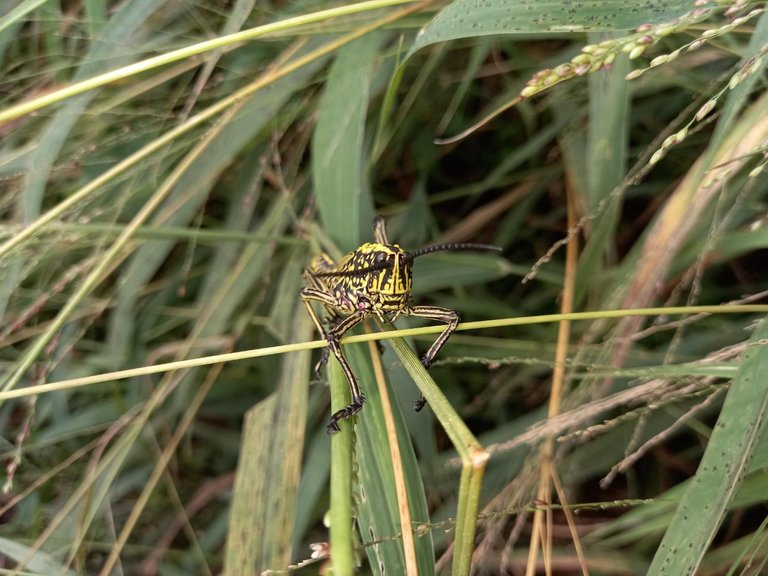
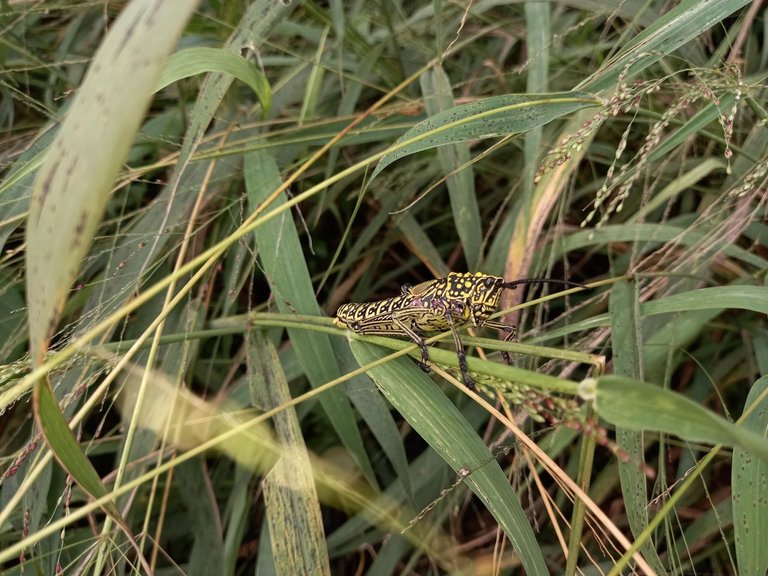
Locusts (derived from the Vulgar Latin locusta, meaning grasshopper[1]) are a collection of certain species of short-horned grasshoppers in the family Acrididae that have a swarming phase. These insects are usually solitary, but under certain circumstances they become more abundant and change their behaviour and habits, becoming gregarious. No taxonomic distinction is made between locust and grasshopper species; the basis for the definition is whether a species forms swarms under intermittently suitable conditions.
These grasshoppers are normally innocuous, their numbers are low, and they do not pose a major economic threat to agriculture. However, under suitable conditions of drought followed by rapid vegetation growth, serotonin in their brains triggers a dramatic set of changes: they start to breed abundantly, becoming gregarious and nomadic (loosely described as migratory) when their populations become dense enough. They form bands of wingless nymphs which later become swarms of winged adults. Both the bands and the swarms move around and rapidly strip fields and cause damage to crops. The adults are powerful fliers; they can travel great distances, consuming most of the green vegetation wherever the swarm settles.[2]
Locusts have formed plagues since prehistory. The ancient Egyptians carved them on their tombs and the insects are mentioned in the Iliad, the Mahabharata, the Bible and the Quran.[3] Swarms have devastated crops and been a contributory cause of famines and human migrations. More recently, changes in agricultural practices and better surveillance of locations where swarms tend to originate have meant that control measures can be used at an early stage. The traditional means of control are based on the use of insecticides from the ground or the air, but other methods using biological control are proving effective.
Swarming behaviour decreased in the 20th century, but despite modern surveillance and control methods, the potential for swarms to form is still present; and when suitable climatic conditions occur and vigilance lapses, plagues can still occur.[4][5] Locusts are large insects and convenient for use in research and the study of zoology in the classroom. They are also edible insects; they have been eaten throughout history and are considered a delicacy in many countries. More here as per wikiedia.org https://en.wikipedia.org/wiki/Locust
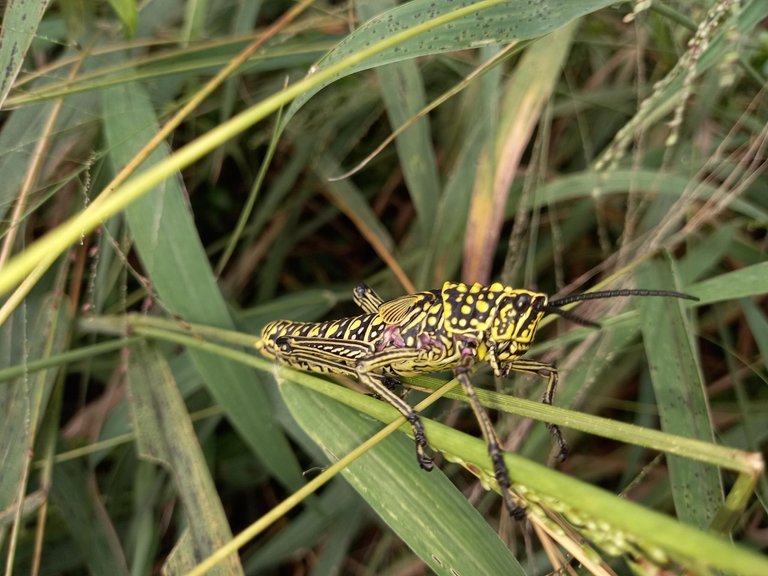
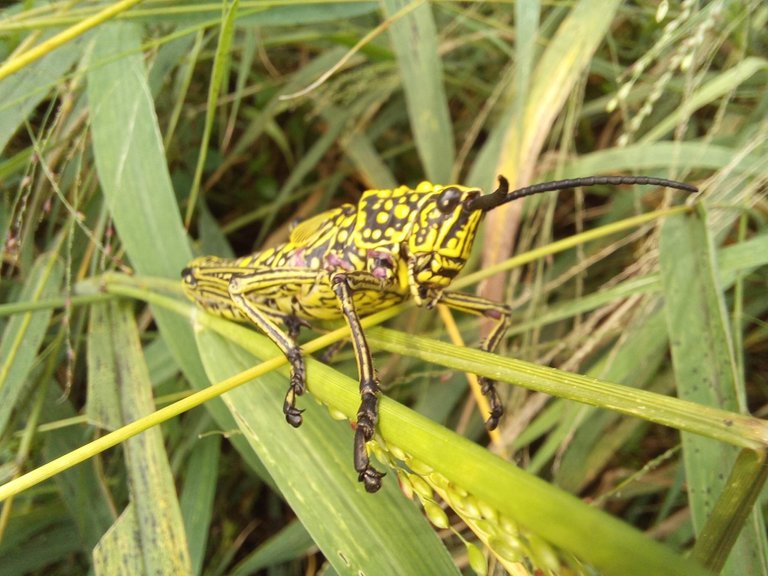
Main articles: Grasshopper, Swarm behaviour, and Predator satiation
A desert locust ovipositing in sand
Locusts are the swarming phase of certain species of short-horned grasshoppers in the family Acrididae. These insects are usually solitary, but under certain circumstances become more abundant and change their behaviour and habits, becoming gregarious.[6][7][8]
Desert locusts in copulation
No taxonomic distinction is made between locust and grasshopper species; the basis for the definition is whether a species forms swarms under intermittently suitable conditions. In English, the term "locust" is used for grasshopper species that change morphologically and behaviourally on crowding, forming swarms that develop from bands of immature stages called hoppers. The change is referred to in the technical literature as "density-dependent phenotypic plasticity".
These changes are examples of phase polyphenism; they were first analysed and described by Boris Uvarov, who was instrumental in setting up the Anti-Locust Research Centre.[9] He made his discoveries during his studies of the migratory locust in Caucasus, whose solitary and gregarious phases had previously been thought to be separate species (Locusta migratoria and L. danica L.). He designated the two phases as solitaria and gregaria.[10] These are also referred to as statary and migratory morphs, though strictly speaking, their swarms are nomadic rather than migratory. Charles Valentine Riley and Norman Criddle were also involved in achieving the understanding and control of locusts.[11][12]
Swarming behaviour is a response to overcrowding. Increased tactile stimulation of the hind legs causes an increase in levels of serotonin.[13] This causes the locust to change colour, eat much more, and breed much more easily. The transformation of the locust to the swarming form is induced by several contacts per minute over a four-hour period.[14] A large swarm can consist of billions of locusts spread out over an area of thousands of square kilometres, with a population of up to 80 million per square kilometre (200 million per square mile).[15] When desert locusts meet, their nervous systems release serotonin, which causes them to become mutually attracted, a prerequisite for swarming.[16][17]
The initial bands of gregarious hoppers are known as "outbreaks", and when these join together into larger groups, the event is known as an "upsurge". Continuing agglomerations of upsurges on a regional level originating from a number of entirely separate breeding locations are known as "plagues".[18] During outbreaks and the early stages of upsurges, only part of the locust population becomes gregarious, with scattered bands of hoppers spread out over a large area. As time goes by, the insects become more cohesive and the bands become concentrated in a smaller area. In the desert locust plague in Africa, the Middle East, and Asia that lasted from 1966 to 1969, the number of locusts increased from two to 30 billion over two generations, but the area covered decreased from over 100,000 square kilometres (39,000 sq mi) to 5,000 square kilometres (1,900 sq mi).[19] https://en.wikipedia.org/wiki/Locust
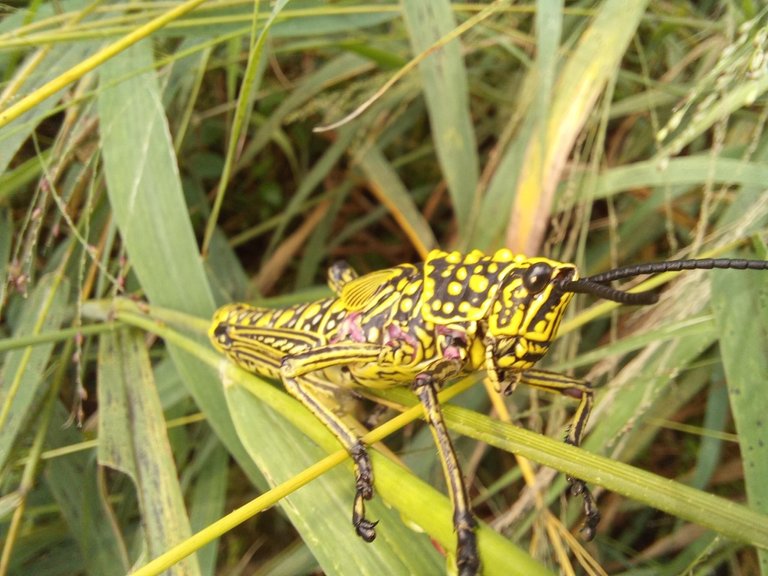
Nature the incredible!
May you have the most incredible weekend! Love and light, be blessed!
Cheer$:)